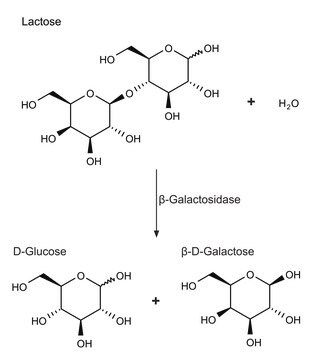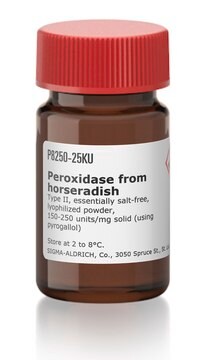90101
Ampliflu™ Red
for fluorescence, ≥98.0% (HPLC)
Synonym(s):
10-Acetyl-3,7-dihydroxyphenoxazine
Sign Into View Organizational & Contract Pricing
All Photos(1)
About This Item
Empirical Formula (Hill Notation):
C14H11NO4
CAS Number:
Molecular Weight:
257.24
MDL number:
UNSPSC Code:
12352108
PubChem Substance ID:
NACRES:
NA.32
Recommended Products
grade
for fluorescence
Quality Level
Assay
≥98.0% (HPLC)
form
powder
fluorescence
λex 571 nm; λem 585 nm in DMSO
storage temp.
2-8°C
SMILES string
CC(=O)N1c2ccc(O)cc2Oc3cc(O)ccc13
InChI
1S/C14H11NO4/c1-8(16)15-11-4-2-9(17)6-13(11)19-14-7-10(18)3-5-12(14)15/h2-7,17-18H,1H3
InChI key
PKYCWFICOKSIHZ-UHFFFAOYSA-N
Looking for similar products? Visit Product Comparison Guide
Related Categories
Application
Ampliflu™ Red has been used to study mitochondrial abnormalities and oxidative stress related to Parkinson’s Disease. Ampliflu™ Red assay was suitable as an alternative indicator assay for detecting the inhibition of hTPO (human thyroid peroxidase) activity. Phospholipase D, an essential cellular process ingredient, used Ampliflu™ Red (10-Acetyl-3,7-dihydroxyphenoxazine) to determine its activity.Ampliflu™ Red is used for the following applications:
- Quantification of inflammatory mediators
- Determination of free and esterified cholesterol contents
- Evaluation of compounds as substrates for GABA-AT compounds
Legal Information
Ampliflu is a trademark of Sigma-Aldrich Co. LLC
related product
Product No.
Description
Pricing
Signal Word
Warning
Hazard Statements
Precautionary Statements
Hazard Classifications
Acute Tox. 4 Oral
Storage Class Code
11 - Combustible Solids
WGK
WGK 3
Flash Point(F)
Not applicable
Flash Point(C)
Not applicable
Personal Protective Equipment
dust mask type N95 (US), Eyeshields, Gloves
Choose from one of the most recent versions:
Already Own This Product?
Find documentation for the products that you have recently purchased in the Document Library.
Customers Also Viewed
Thais Soprani Ayala et al.
Scientific reports, 9(1), 11447-11447 (2019-08-09)
Macrophages may be a crucial aspect of diabetic complications associated with the inflammatory response. In this study, we examined how hyperglycaemia, a common aspect of diabetes, modulates bone marrow-derived macrophages (BMDMs) under an inflammatory stimulus. To perform this study, BMDMs
Kazuo Sugiyama et al.
PloS one, 9(4), e94460-e94460 (2014-04-11)
Most of experiments for HCV infection have been done using lytic infection systems, in which HCV-infected cells inevitably die. Here, to elucidate metabolic alteration in HCV-infected cells in a more stable condition, we established an HCV-persistently-infected cell line, designated as
Dustin D Hawker et al.
Bioorganic & medicinal chemistry, 20(19), 5763-5773 (2012-09-05)
Two principal neurotransmitters are involved in the regulation of mammalian neuronal activity, namely, γ-aminobutyric acid (GABA), an inhibitory neurotransmitter, and L-glutamic acid, an excitatory neurotransmitter. Low GABA levels in the brain have been implicated in epilepsy and several other neurological
Anne H van der Spek et al.
Endocrine connections, 6(8), 731-740 (2017-11-05)
Innate immune cells have recently been identified as novel thyroid hormone (TH) target cells in which intracellular TH levels appear to play an important functional role. The possible involvement of TH receptor alpha (TRα), which is the predominant TR in
Houjuan Zhu et al.
ACS nano, 11(9), 8998-9009 (2017-08-26)
Development of optical nanotheranostics for the capability of photodynamic therapy (PDT) provides opportunities for advanced cancer therapy. However, most nanotheranostic systems fail to regulate their generation levels of reactive oxygen species (ROS) according to the disease microenvironment, which can potentially
Our team of scientists has experience in all areas of research including Life Science, Material Science, Chemical Synthesis, Chromatography, Analytical and many others.
Contact Technical Service













